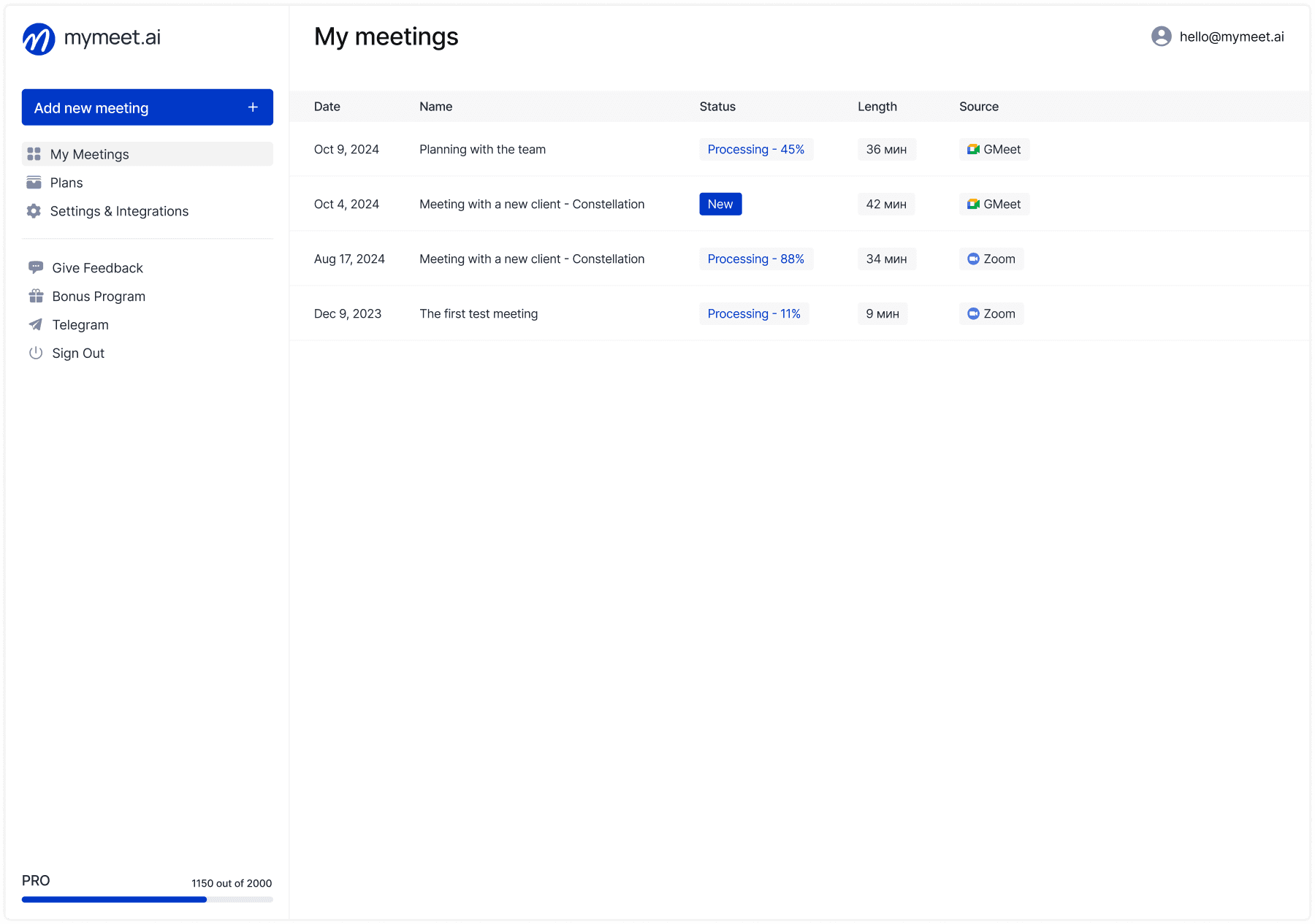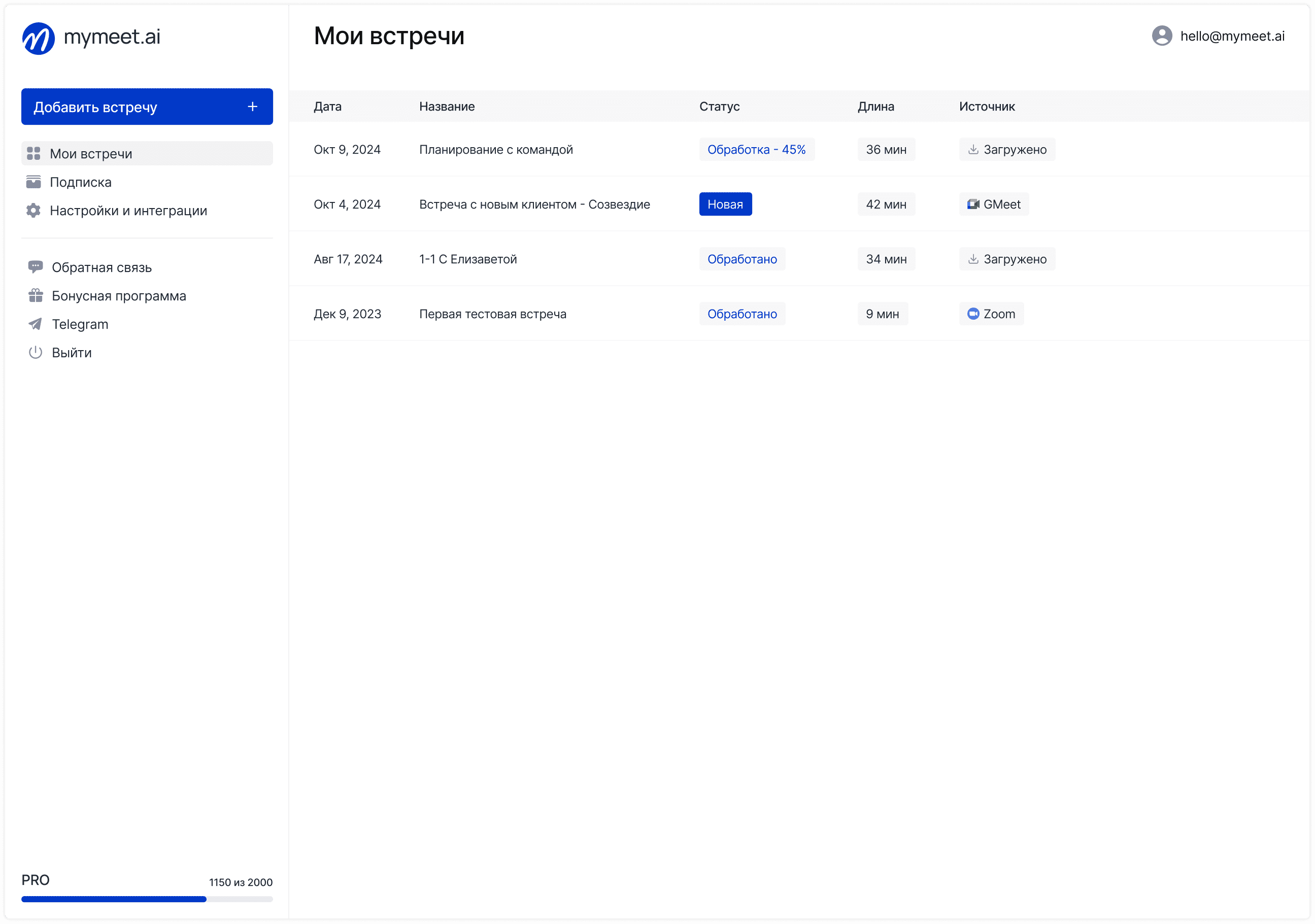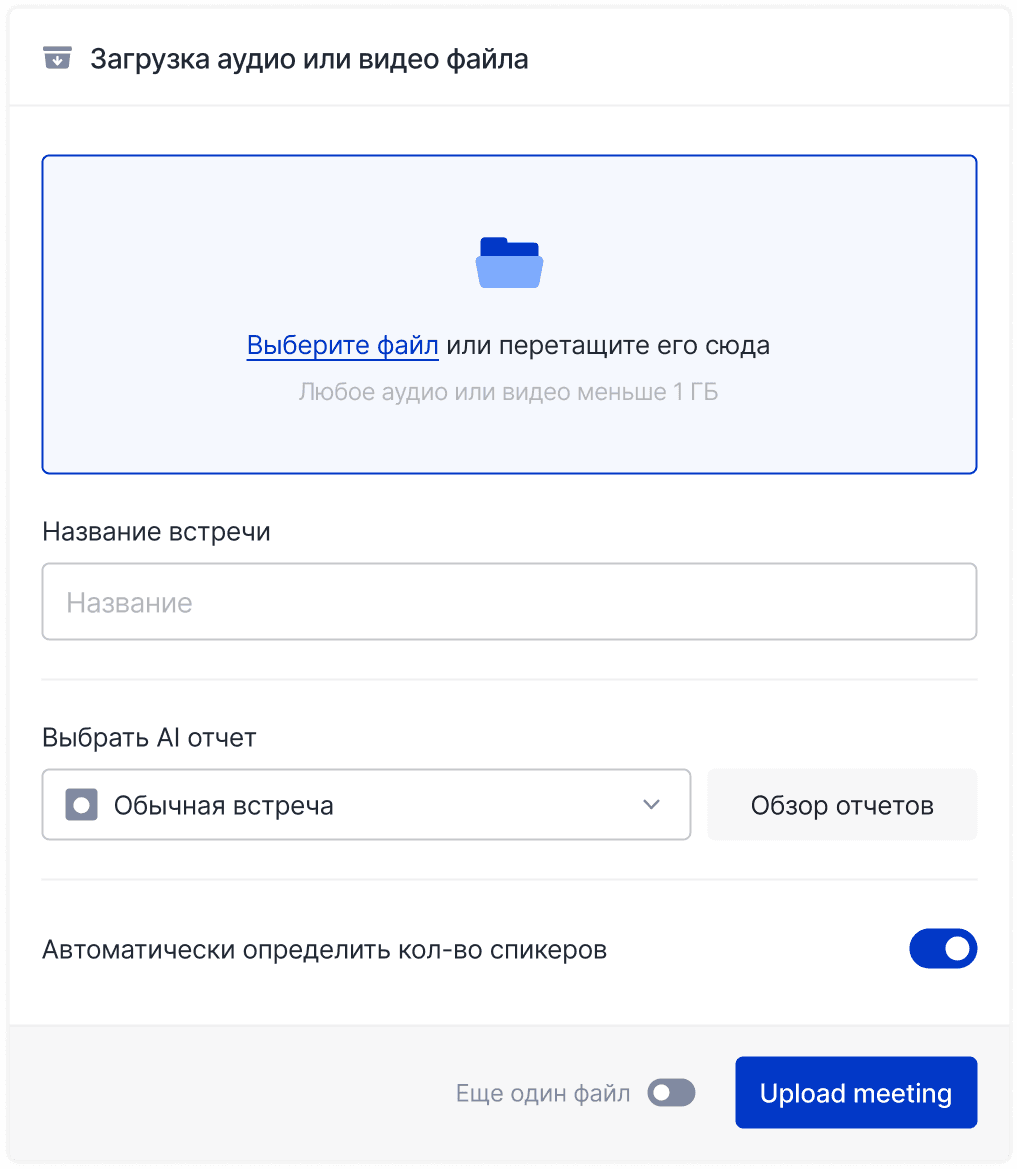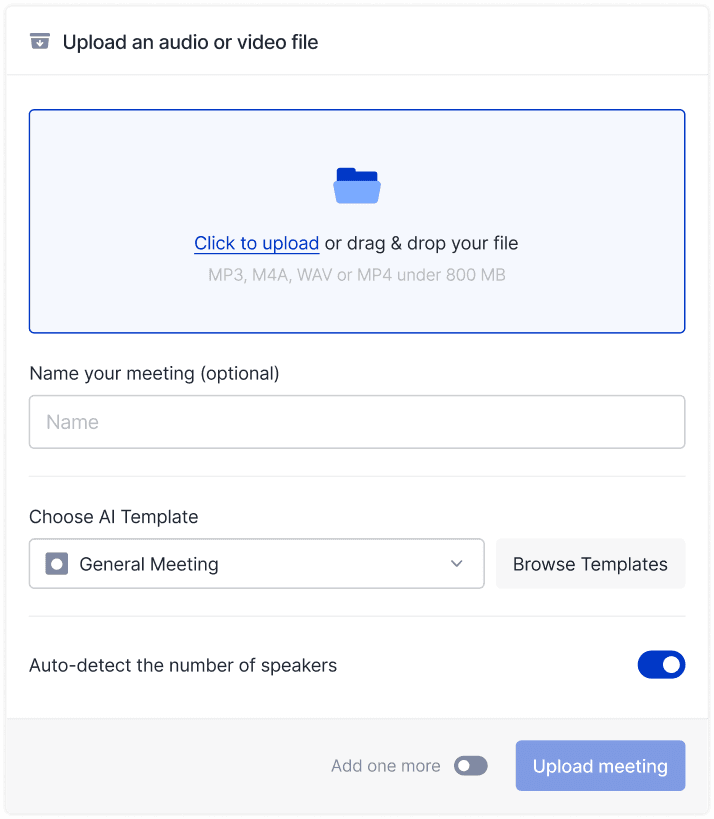Meeting Tips

Andrey Shcherbina
Mar 20, 2025
"Success is not final, failure is not fatal: it is the courage to continue that counts," Winston Churchill once said. In today's business world, this principle comes to life through post-mortem meetings—a systematic analysis of completed projects and incidents to extract valuable lessons.
A post-mortem meeting is a structured discussion held after a project ends or an incident is resolved. The goal is to thoroughly analyze what went well, what didn't, why it happened, and how processes can be improved going forward.
According to McKinsey research, companies that regularly conduct quality retrospectives are 28% more likely to succeed in subsequent projects. Google's research shows that teams with a post-mortem culture resolve recurring incidents 17% faster.
When to Hold a Post-Mortem Meeting

Not every project or incident requires a formal post-mortem analysis. However, there are situations when such analysis is critical:
After completing significant projects. Regardless of whether the project was successful or not, it's important to analyze the process and results. Post-mortems are especially valuable for projects that significantly exceeded budget, went beyond deadlines, or conversely, were exceptionally successful.
After serious incidents and failures. If there was a system failure, a serious product error, or a critical process breakdown—this is the perfect time for a post-mortem. Such analysis helps prevent similar situations in the future.
When there's significant deviation from planned metrics. If a marketing campaign produces results substantially different from predictions (either better or worse), a post-mortem will help understand the causes and adjust forecasting models.
In our company, we follow a simple rule: if a project involves more than three departments, lasts longer than a quarter, or costs above a certain amount—a post-mortem is mandatory. This helps standardize the process and ensures we don't miss important lessons.
Key Principles of Effective Post-Mortems
After years of working with dozens of technology companies, I've identified four fundamental principles that make post-mortems truly valuable tools:
Safety: Focus on processes, not people. An effective post-mortem never turns into a blame game. Instead of asking "who made the mistake?" we ask "what in our processes allowed this mistake to happen?" According to Google, psychological safety is the key factor for productive post-mortem meetings.
Transparency: Open discussion of problems. The meeting should be based on honest and open discussion. Leaders should set an example by acknowledging their mistakes first and creating an atmosphere where everyone can speak up without fear.
Constructiveness: Extracting lessons. A post-mortem isn't just a debrief—it's a look ahead. Each identified problem should lead to a specific lesson or principle that will help improve work in the future.
Actionability: Concrete steps for improvement. The meeting should conclude with a clear list of actions, assigned owners, and established deadlines. Without this, even the most brilliant analysis remains just talk.
These principles should be stated at the beginning of each post-mortem meeting to set the right tone for discussion.
Structure and Agenda of a Post-Mortem Meeting
For maximum effectiveness, it's important to follow a clear structure. The optimal timing is 1-2 days after project completion or incident resolution, when details are still fresh but emotions have settled a bit.
The meeting typically lasts 60-90 minutes, depending on the complexity of the topic. For critical incidents, up to 2 hours may be needed.
It's important to assign the following roles:
Moderator – manages the discussion, keeps track of time and focus
Secretary – documents key points and decisions
Participants – project team members and key stakeholders
An effective post-mortem agenda includes:
Introduction (5 minutes)
Overview of meeting objectives
Reminder of principles (safety, constructiveness)
Project/Incident Overview (10 minutes)
Brief description of what happened
Key metrics and results
Event Timeline (15 minutes)
Sequential review of key stages
Identification of critical moments
What Worked Well (15 minutes)
Successful solutions and approaches
Processes worth keeping
What Could Be Improved (20 minutes)
Identification of problem areas
Root cause analysis
Action Plan (15 minutes)
Specific improvement steps
Assignment of responsibilities and deadlines
Conclusion (5 minutes)
Summary of key findings
Next steps
This template can be adapted to your organization's specific needs, but it's important to maintain a balance between analyzing successes and failures.
Tools and Techniques for Productive Post-Mortems
There are several proven tools that help make post-mortems more structured and effective:
The "Five Whys" Technique – a simple but powerful method for identifying root causes. The essence is to sequentially ask "why?" at least five times to each answer received. For example:
Why didn't we launch the project on time? – Because testing took longer than planned.
Why did testing take longer? – Because many critical bugs were discovered.
Why were so many bugs discovered? – Because developers weren't conducting unit testing.
Why wasn't unit testing conducted? – Because the project timeline didn't allocate time for it.
Why wasn't time allocated in the timeline? – Because our planning process doesn't account for the need for unit testing.
The root cause is identified—a deficiency in the planning process, not simply a lack of testing time.
Root Cause Analysis (RCA) – a more formalized approach to identifying root causes, which includes data collection, identifying cause-and-effect relationships, and determining corrective actions. RCA is particularly useful for analyzing complex, multi-factor problems.
Event Timeline and Chronology – visualization of the sequence of events with time indicators, duration, and interrelationships. This helps identify bottlenecks, delays, and critical points in a project or incident.
Fishbone Diagram (Ishikawa) – a visual tool for categorizing potential causes of a problem. Main categories typically include: people, processes, technology, materials, methods, and environment. The diagram helps structure thinking and ensures important factors aren't overlooked.
The choice of specific tools depends on the nature of the project or incident, but it's important to use at least one structured approach for analysis.
Post-Mortem Documentation
Documenting post-mortem results is a critical step—without it, the lessons learned may be quickly forgotten. A standard post-mortem report usually includes the following sections:
Project/Incident Overview
Brief description
Key metrics and results
Timeframes
What Worked Well
Successful solutions and practices
Factors contributing to success
Problem Areas
Identified issues
Root causes
Lessons Learned
Key takeaways
Recommendations for future projects
Action Plan
Specific measures for improvement
Responsible persons and deadlines
It's important that documentation is accessible to all stakeholders and serves as a basis for tracking the implementation of decisions. Many companies create a knowledge base of post-mortem reports, which becomes a valuable resource for learning and planning future projects.
How mymeet.ai Enhances Post-Mortem Meetings

Conducting effective post-mortems requires careful recording and analysis of all discussions. This is where modern technology comes in. The mymeet.ai platform offers several features that significantly improve the post-mortem process:
Automatic recording and transcription. The system records the entire meeting and converts it to text with speaker separation. This allows participants to focus completely on the discussion without being distracted by note-taking. After the meeting, anyone can refer to the verbatim record to clarify details.

Highlighting key decisions and tasks. Artificial intelligence automatically identifies key decisions, assigned tasks, and responsible persons in the transcript. This eliminates the risk of important agreements being forgotten or misinterpreted.

AI assistant for pattern detection. One of mymeet.ai's unique advantages is its ability to analyze discussion content and identify recurring themes, connections between problems, and potential root causes. The system can suggest questions for deeper problem investigation based on context analysis.

The AI chat feature is particularly valuable—you can ask questions about the meeting content: "What main causes of project delay were identified?" "Who's responsible for reviewing the testing process?" "What successful solutions do we want to scale?" This allows for quick extraction of specific information without needing to reread the entire transcript.
Post-Mortem Examples from Well-Known Companies
Many successful technology companies have developed a strong post-mortem culture and openly share their approaches and results.
Google is known for its "blameless post-mortem" approach. After each significant incident, the company conducts a thorough analysis, focusing on systemic factors rather than individual errors. One notable example is the analysis and documentation of the 2014 Gmail outage, when the service was unavailable to users for 25 minutes. Google not only fixed the technical issue but also revised their configuration update process, which led to a significant reduction in similar incidents.
Amazon uses a "Correction of Error" (COE) process, which is their version of post-mortem. After the failed launch of the Fire Phone, Amazon conducted an extensive COE, which led to a fundamental rethinking of their product development approach. This directly influenced the success of subsequent products, including Echo and Alexa.
Spotify has integrated post-mortems into their "test and learn" culture. The company regularly holds "failure fests"—special meetings where teams share stories of failures and lessons learned. This approach has helped Spotify create a culture where failures are viewed as learning opportunities rather than grounds for punishment.
These examples show that an effective post-mortem process can lead to significant improvements in products, processes, and organizational culture.
Common Post-Mortem Mistakes
Even experienced teams make mistakes when conducting post-mortems. Here are the most common ones:
Searching for culprits instead of systemic problems. Too often, post-mortems turn into "witch hunts" where the main goal is to find who's at fault. This not only destroys psychological safety but also distracts from identifying and addressing the systemic issues that allowed the error to occur.
Insufficient attention to root causes. Many teams stop at a surface level of analysis, identifying only symptoms rather than true causes of problems. For example, a team might determine that a project was delayed due to prolonged testing, but not dig deeper to understand why testing took longer than planned.
Lack of specific actions based on results. A post-mortem that ends with conclusions but no specific action plan has limited value. Each identified lesson should transform into a concrete action with an assigned owner and deadline.
Ignoring successful aspects. Often teams focus exclusively on problems, ignoring what worked well. This deprives them of the opportunity to reinforce and scale successful practices.
Delaying documentation. If post-mortem results aren't documented immediately after the meeting, many valuable details and nuances may be lost. Modern tools like mymeet.ai solve this problem by automatically recording all discussions.
Awareness of these common mistakes helps teams conduct more effective post-mortem meetings and extract maximum benefit from the analysis.
Post-Mortems as an Element of Organizational Culture
For post-mortems to become truly effective tools, they must be integrated into the organizational culture. The foundation for this is psychological safety—an environment where people feel they can speak up, ask questions, acknowledge mistakes, and suggest ideas without fear of being punished or humiliated.
According to Google's research, psychological safety is the most important factor in team effectiveness. To create such an environment, leaders should:
Model desired behavior by openly acknowledging their mistakes
Actively listen and show value for different perspectives
Separate personality from action, focusing on behavior rather than the person
Express gratitude to those who openly discuss problems
Implementing post-mortem practices in a company typically goes through several stages:
Pilot launch – implementing the practice in one team or on one project
Process standardization – developing templates and guidelines
Training – preparing moderators and participants
Scaling – extending the practice throughout the organization
Continuous improvement – regularly reviewing and optimizing the process
Companies that have successfully integrated post-mortems into their culture note not only improvements in product and process quality but also increased employee engagement, improved communication, and enhanced organizational resilience.
Conclusion
Post-mortem meetings aren't just a formality or an item in project documentation. They're powerful tools for organizational learning and continuous improvement. Effective post-mortems help teams extract valuable lessons from every project and incident, turning both successes and failures into growth opportunities.
Key elements of successful post-mortems include:
Psychological safety and absence of blame
A structured approach to analysis
Focus on both problems and successes
Identifying root causes, not just symptoms
Transforming findings into specific actions
Quality documentation and result tracking
Investing in developing post-mortem culture and processes brings long-term value to an organization, fostering an environment of continuous learning and adaptation. In a world where the ability to learn quickly and adapt is becoming a key competitive advantage, an effective post-mortem process can be one of the most valuable tools in a modern company's arsenal.
As Henry Ford said: "The only real mistake is the one from which we learn nothing." Post-mortem meetings help turn every mistake into a valuable lesson and every success into a repeatable practice.
Frequently Asked Questions About Post-Mortem Meetings
When is the best time to hold a post-mortem meeting?
The optimal time is 1-2 days after project completion or incident resolution. At this point, details are still fresh, but the strongest emotions have subsided. For critical incidents, you can conduct a brief initial session immediately after resolving the problem, followed by a more detailed analysis a few days later.
Who should participate in a post-mortem discussion?
Key project participants or people involved in the incident must be present. It's also useful to include representatives from related teams affected by the project, and sometimes a "fresh perspective"—someone not directly involved but capable of asking unbiased questions. Senior leaders should participate selectively—their presence can suppress open discussion.
How do you create a psychologically safe atmosphere?
Start the meeting with an explicit reminder of principles (focus on systems, not people). Leaders should set an example by being the first to acknowledge their mistakes. Use neutral language: "the system didn't work" instead of "you made a mistake." Encourage different perspectives and thank people for their openness. If someone starts blaming others, the moderator should gently redirect the discussion to systemic factors.
How does a post-mortem differ from a sprint retrospective?
A sprint retrospective focuses on the team's work process during the sprint and occurs regularly. A post-mortem is conducted after project completion or incident resolution and covers a broader context, including business results, stakeholder interactions, and external factors. Sprint retrospectives are oriented toward continuous process improvement, while post-mortems focus on extracting lessons from specific events.
How often should post-mortem meetings be held?
There's no universal frequency—post-mortems are conducted as needed, depending on project completions or incident occurrences. However, it's useful to establish clear criteria for organizing post-mortems (e.g., for projects of a certain scale or incidents of certain severity). Some organizations also conduct periodic "macro post-mortems," analyzing trends and patterns identified in a series of post-mortems over a specific period.
Andrey Shcherbina
Mar 20, 2025








